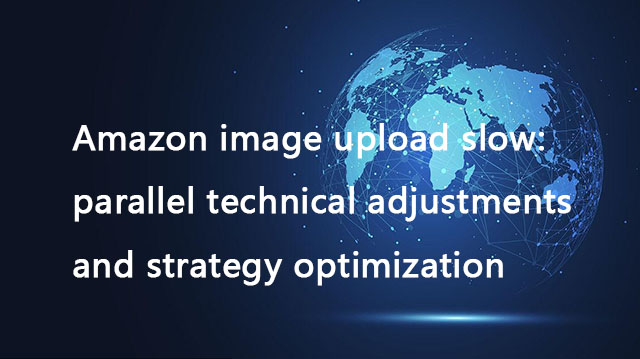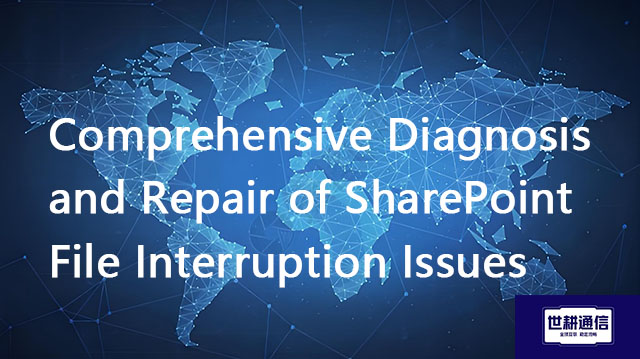Amazon image upload slow: parallel technical adjustments and strategy optimization??? Solution//Global IPLC service provider of Shigeng Communication
一、In the Amazon e-commerce ecosystem, high-quality product images have a decisive impact on conversion rates. However, many sellers and technical teams are facing a persistent challenge: slow image upload speed. This bottleneck not only hinders the efficiency of product listing, but also directly affects the workflow and sales performance of the operations team. When uploading image files exceeding 1MB, the upload process becomes "too slow and unusable", which is particularly evident in batch operations
Through in-depth analysis of the root cause of the problem, we found that the performance of image uploading is constrained by multiple factors:
Network transmission layer: Cross regional data upload may encounter network latency
At the file processing level: unoptimized image files have a large volume
Platform specification level: Amazon has specific format requirements for images (such as pure white background, no watermark, product proportion of over 85%, 1000+pixel JPEG format, etc.)
At the technical implementation level, modern upload optimization strategies have not been adopted
2 Technical adjustment strategies
2.1 File Sharding and Parallel Transmission
Sharding upload technology is the core strategy for solving large file transmission. This technology divides large files into multiple small blocks (such as 1MB each), significantly improving upload efficiency through parallel transmission mechanisms. Traditional single file upload requires the entire file to be retransmitted when encountering network fluctuations, while sharding mechanism only needs to retransmit failed segments, greatly improving transmission reliability.
To implement shard upload in Amazon S3 environment, the following technical path must be followed:
Initialize upload session and obtain unique ID
Split the image file into multiple chunks
Start multi-threaded parallel upload of each shard
Transmission acceleration is another key technological means. By enabling S3 Transfer Acceleration and utilizing Amazon's CloudFront edge nodes to optimize transmission paths, delays in long-distance uploads can be reduced. Tests have shown that the acceleration effect can be improved by more than 50% when uploading across regions. Enabling only requires adjusting the configuration in the S3 console:
2.2 Format compression dual track optimization
The strategic choice of image format directly affects file size and upload efficiency. Although Amazon requires JPEG as the primary format, a balance between quality and volume can be achieved through intelligent format selection:
Progressive JPEG is currently the most optimized choice for the Amazon environment. Unlike standard JPEG line by line loading, progressive JPEG first presents low resolution images and then gradually enhances the image quality. This format allows displaying complete images before the file is fully loaded, greatly enhancing the user experience.
Image compression technology requires precise control between quality and volume. Suggest adopting the following workflow:
Resolution standardization: Adjust the image to 1600 × 1600 pixels (the minimum size that meets scaling requirements)
DPI optimization: reduced to 72 Pixels/Inch (sufficient screen display)
Quality parameter adjustment: Set the quality to level 6-4 (60-80%) in tools such as PS
Metadata stripping: removing non essential data such as EXIF
2.3 Transmission Protocol and Network Optimization
CDN integration is particularly crucial for global operational sellers. When the user is far away from the area where the S3 storage bucket is located, direct upload may encounter high latency. Through CDN services such as CloudFront, users can connect to the nearest edge node and then be transmitted to the S3 source station via Amazon's high-speed backbone network. Especially for users in regions such as Asia and South America, the delay reduction effect is significant.
Protocol optimization cannot be ignored either:
HTTP/2: Supports multiplexing to reduce connection overhead
TCP optimization: Adjusting congestion control algorithms (such as BBR)
Compressed transmission: Enable Gzip compression for text data (such as metadata)
3 Platform Standard Adaptation Strategies
3.1 Essentials of Amazon Image Standards
Amazon has strict requirements for product images, and non compliant images are not only slow to upload, but may also lead to review failures. The core requirements include:
Main image specification: Pure white background (RGB 255255255), no watermark/text, product proportion ≥ 85%
Format standards: JPEG format (recommended), TIFF/PNG (not recommended)
Resolution: ≥ 1000 pixels (meets scaling requirements), recommended 1600 pixels for optimal resolution
Content guidelines: Physical shooting (illustrations prohibited), clear display of products, avoiding blurring
Background processing techniques directly affect compliance: using a white background for dark products; White products are suitable for a dark gray background (# F2F3F4) to highlight the contours. Professional photography equipment (not mobile phones) can avoid blurring problems during shooting, ensure one-time approval, and reduce duplicate uploads.
3.2 Progressive loading and mobile adaptation
Mobile optimization is currently a key battlefield in e-commerce. More than 70% of Amazon's traffic comes from mobile devices, but large-sized images load slowly on mobile networks, leading to user churn. Progressive JPEG solves this pain point through a layered loading mechanism:
This mechanism ensures that users can recognize product content before the image is fully loaded, significantly improving the mobile experience. Check the 'Progressive' option when exporting in Photoshop to enable this feature.
Responsive image strategy further optimizes bandwidth utilization:
Provide adaptive sizes for different devices
Combining the<picture>element with srcset
3.3 Metadata Simplification Strategy
Image metadata (EXIF, XMP, etc.) is often overlooked but significantly affects file size. A single image captured by a modern digital camera may contain hundreds of KB of metadata (GPS location, camera parameters, thumbnail, etc.), which is of no value to e-commerce display but increases the upload burden.
Metadata stripping should be enforced in the export process:
Photoshop: Uncheck the 'Metadata' option when exporting
Command line tool: Use exiftool - all=input.jpg
Color space optimization is another key detail. Converting to sRGB color space (Convert to sRGB option) ensures cross device display consistency while avoiding unnecessary color profiles (such as Adobe RGB) that increase file size.
conclusion
Solving the slow upload problem of Amazon images requires a dual track approach of technical adjustments and strategic optimization. The core optimization strategy includes: using shard upload and parallel transmission technology to break through the bottleneck of large file upload; Reduce file size through format optimization and compression techniques; Strictly follow Amazon image standards to avoid duplicate uploads; Implement client-side preprocessing and server-side asynchronous processing to reduce system load.

二、Shigeng Communication Global Office Network Products:
The global office network product of Shigeng Communication is a high-quality product developed by the company for Chinese and foreign enterprise customers to access the application data transmission internet of overseas enterprises by making full use of its own network coverage and network management advantages.
Features of Global Application Network Products for Multinational Enterprises:
1. Quickly access global Internet cloud platform resources
2. Stable and low latency global cloud based video conferencing
3. Convenient and fast use of Internet resource sharing cloud platform (OA/ERP/cloud storage and other applications
Product tariff:
Global office network expenses | Monthly rent payment/yuan | Annual payment/yuan | Remarks |
Quality Package 1 | 1000 | 10800 | Free testing experience for 7 days |
Quality Package 2 | 1500 | 14400 | Free testing experience for 7 days |
Dedicated line package | 2400 | 19200 | Free testing experience for 7 days |







